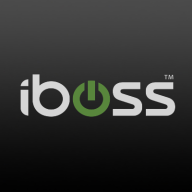


JumpCloud and Axis Security are competing in the tech space, focusing on identity management and secure access solutions. Axis Security has an advantage due to its innovative security features.
Features: JumpCloud offers identity and access management, comprehensive directory services, and multi-factor authentication. Axis Security provides secure cloud-based access solutions and a Zero Trust architecture, significantly enhancing security measures.
Room for Improvement: JumpCloud could enhance its reporting capabilities, expand policy management features, and improve mobile device management. Axis Security might benefit from streamlining integration processes, enhancing user interfaces, and lowering initial costs.
Ease of Deployment and Customer Service: JumpCloud's deployment is straightforward, combined with high-quality customer service ensuring efficient support. Axis Security offers effective deployment models with attention to security integration, yet JumpCloud's ease provides a smoother experience.
Pricing and ROI: JumpCloud presents a budget-friendly cost structure, delivering strong ROI through versatile features. Axis Security may have a higher initial cost but aligns with industry expectations due to substantial security upgrades, potentially leading to significant ROI for security-focused investments.



iboss offers a comprehensive security platform designed for diverse use cases such as web filtering, data loss protection, corporate proxy services, and URL filtering.
iboss integrates advanced features to address dynamic security needs, leveraging its strength in SASE, ZTNA, AI initiatives, and cloud integration, while ensuring seamless operations for remote work. It excels in historical forensics, malware protection, and flexible cloud deployments. Users benefit from comprehensive traffic scanning, robust malware detection, and PaaS capabilities that reduce hardware management. An intuitive admin console ensures efficient management with content filtering and low false positives. SSL decryption enhances security, while DLP protects data in AI conversations. Deployment is rapid and scalable, allowing effortless integration with emerging technologies.
What features does iboss offer?
What benefits and ROI should users consider?
iboss finds significant application in sectors such as education, where web filtering for K-12 is crucial, and in corporate environments requiring robust proxy services and URL filtering for network security. Its adaptability is essential in scenarios demanding flexible, decentralized security frameworks, particularly for remote work setups.
Axis Security is a prominent enterprise security solution, specializing in Zero Trust Network Access (ZTNA). The Axis Security Application Access Cloud platform is designed to secure remote access to applications and services hosted in the cloud or on-premises. It aims to simplify and enhance access controls while maintaining strong security measures.
Axis Security's platform stands out by offering a comprehensive, cloud-native solution designed to enable secure access to private applications. Their Application Access Cloud simplifies network security, eliminating the need for traditional VPNs, and provides a more secure and efficient way to connect users to private applications, regardless of where the users or the applications are located.
Axis Security users on PeerSpot have highlighted the ease of deployment and the non-intrusive nature of Axis Security's solution as major advantages. One IT Director noted, "The implementation was straightforward and didn’t disrupt our existing operations, which was a major plus." Another user, a Security Manager, praised the platform's robust security features, saying, "Axis Security has significantly enhanced our ability to control and monitor application access, giving us peace of mind in our security operations."
Axis Security follows the principles of zero-trust architecture, which means it treats every access request as potentially untrusted, regardless of the user's location or network. It applies rigorous authentication and authorization controls to ensure only authorized users can access specific applications and resources. Axis Security enables secure remote access to applications and services without requiring a VPN (Virtual Private Network). It establishes a secure connection between users and applications, protecting against potential threats and reducing the attack surface.
With Axis Security, organizations can granularly control user access to specific applications or services. This ensures that users only have access to the resources they need, reducing the risk of unauthorized access or data breaches. The platform simplifies access management by providing a centralized control point for managing user access policies. IT administrators can define access rules based on user roles, groups, or other criteria, making it easier to enforce security policies and maintain compliance.
Axis Security continuously monitors user activity and application access, detecting potential threats and anomalies in real-time. It provides insights into user behavior, allowing organizations to identify and mitigate security risks promptly.
Axis Security is built on a cloud-native architecture, allowing it to scale and adapt to dynamic cloud environments. It can seamlessly integrate with various cloud services and supports hybrid deployments, making it suitable for organizations with diverse infrastructure setups.
Axis Security aims to provide secure and simplified remote access to applications while adhering to the principles of zero trust. By implementing granular access controls and continuous monitoring, it helps organizations protect their critical resources and reduce the risk of unauthorized access or data breaches.
JumpCloud enables organizations to manage devices, users, and applications across platforms like Windows, Mac, Linux, iOS, and Android. It offers centralized authentication, identity and access management, single sign-on, directory services, security policy enforcement, and cloud service integration.
Organizations leverage JumpCloud for its robust device management, policy management, and seamless integration with applications such as Microsoft 365 and Google Workspace. Its flexibility, stability, scalability, and ease of use make it a strong choice for managing business directories, executing scripts on-demand, synchronizing system access, and implementing mobile device management. Key features include remote access, Windows Out of Box Experience, strong authentication and authorization controls, centralized user and device management, efficient onboarding and offboarding processes, and extensive security and reporting features.
What are the most important features?In specific industries, JumpCloud is utilized to manage a wide array of tasks such as automating administrative functions in healthcare, ensuring secure access to sensitive data in finance, and supporting remote work needs in technology sectors. Its ability to integrate with diverse platforms and provide centralized control makes it suitable for managing complex IT environments.
We monitor all ZTNA as a Service reviews to prevent fraudulent reviews and keep review quality high. We do not post reviews by company employees or direct competitors. We validate each review for authenticity via cross-reference with LinkedIn, and personal follow-up with the reviewer when necessary.